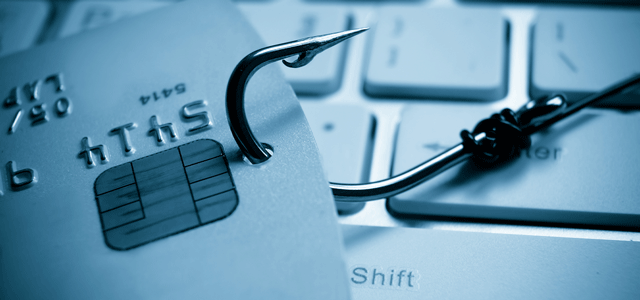What Happens if You Click on a Phishing Link? [Plus, Ways to Prevent it]

You think you’ve clicked on a phishing link. What happens now?
A majority of phishing links are sent via email and designed to fool the recipient into downloading a virus, giving up a credit card number, providing personal information (like a Social Security number) or offer account or login information to a particular website.
Often, these emails are well crafted to look exactly like an official notification from a site the target is familiar and comfortable with, which can make it hard to know if you’ve clicked a phishing link, what happens afterwards and what to do to fix the problem.
Download the eBook, How to Spot and Thwart Phishing Scams: A Guide for Businesses.
How can you know if you’ve clicked on a phishing link?
Before you panic, you need to make sure that it was actually a phishing link that you clicked on.
To determine if you’ve received a phishing link, look for inconsistencies in the sender’s email address, links and domains. Hover your cursor over the link before clicking to preview the URL that it leads to (likely in a pop-up near your cursor or bottom corner of your screen). If the domain doesn’t exist, that’s highly suspicious, and it’s likely to be a phishing link.
Other red flags that can identify a phishing link can include unusual or urgent requests and error-filled language within the email itself.
To know for sure if you’ve clicked on a phishing link, you can also scan your device for malware to see if any malicious files have been downloaded.

What happens if you open an email with a phishing link?
Fortunately, it’s very unlikely a cyber criminal will be able to steal your data or install a virus on your computer by you simply opening a spam email.
The programming behind the emails usually requires users to download an attachment or click on a phishing link within the email to infect a device.
However, as technology has advanced, so have phishing attacks, so it’s still a good rule of thumb to never open a spam email.
So, what happens if you click on a phishing link?
Depending on your specific situation, a few different things can happen if you click on a phishing link.
A Hacker May Receive Information From or About You
If you click on a phishing link, the attacker will automatically receive some basic data, such as your device statistics, approximate location and any other information you may have voluntarily provided.
Malware May Be Installed on Your Device
Malicious software, like spyware, ransomware or a virus can be installed unbeknownst to the user. These malicious files can infect your device and collect confidential data for the cyber criminal.
Your Network and Contacts May Be Exploited
Breaches to your entire network can happen if you click on a phishing link when hackers start sending the people on your contact list further phishing emails, or worse, gain remote access to your computer.
What should you do if you’ve determined your device has been compromised?
If you suspect your device has been compromised after clicking on a phishing link, the first thing you should do is disconnect your device from the internet and all other networks. This will prevent malware from spreading to synchronized devices.
Then, immediately contact your company’s IT department and run a virus scan, deleting any malware detected. Try to quickly reset any passwords that may be compromised and await further guidance from your organization’s IT support.
After you have taken those immediate actions, it’s good practice to also close the email and mark it as spam or junk. This helps train your company’s phishing detection software to catch it next time.
You may also want to watch for communications from friends, family or colleagues about strange emails they may have received from you. Remember, the hacker might have access to your contact list!
Four Ways to Prevent Clicking on a Phishing Link in the First Place
The greatest remedy to these types of breaches is prevention and education on the front end—avoiding clicking on a phishing link altogether. Here are a few ways you can prevent a successful phishing attack from happening to your business in the first place:
1. Update Your Antivirus Protection
Make sure your antivirus and anti-ransomware software is up to date. Security software isn’t 100% perfect at removing all forms of malware, so it’s important to run regular scans and make sure your virus definitions are current.
2. Institute Phishing Email Detection
Use an email system with a sophisticated detection scanner to scan all incoming email attachments. This application will not only detect potential phishing but will also block the emails that may have viruses or other malicious files attached.
3. Prioritize Phishing Education
When all else fails, rely on your training. Spam messages usually have several red flags that can tip you off before you click on a phishing link. If you’re able to spot them beforehand, you can stop a phishing attack before it happens.
4. Connect with an IT Partner
Don’t be afraid to reach out for help. Even if you don’t have an IT department, an outsourced IT provider can help you with a variety of IT services that can prevent phishing attacks. Having an outside eye and the insight of an expert can position your business to be even safer from phishing attacks and data breaches.
Learn More About What Happens if You Click on a Phishing Link and How to Prevent It
If you’re considering ways to protect your business from cyber threats and you’d like to learn more about what happens if you’ve clicked on a phishing link or ways to prevent it in the first place, speak with a Warren Averett Technology Group expert today. By outsourcing your organization’s IT and cybersecurity, you can keep your business safe with tailored solutions.

